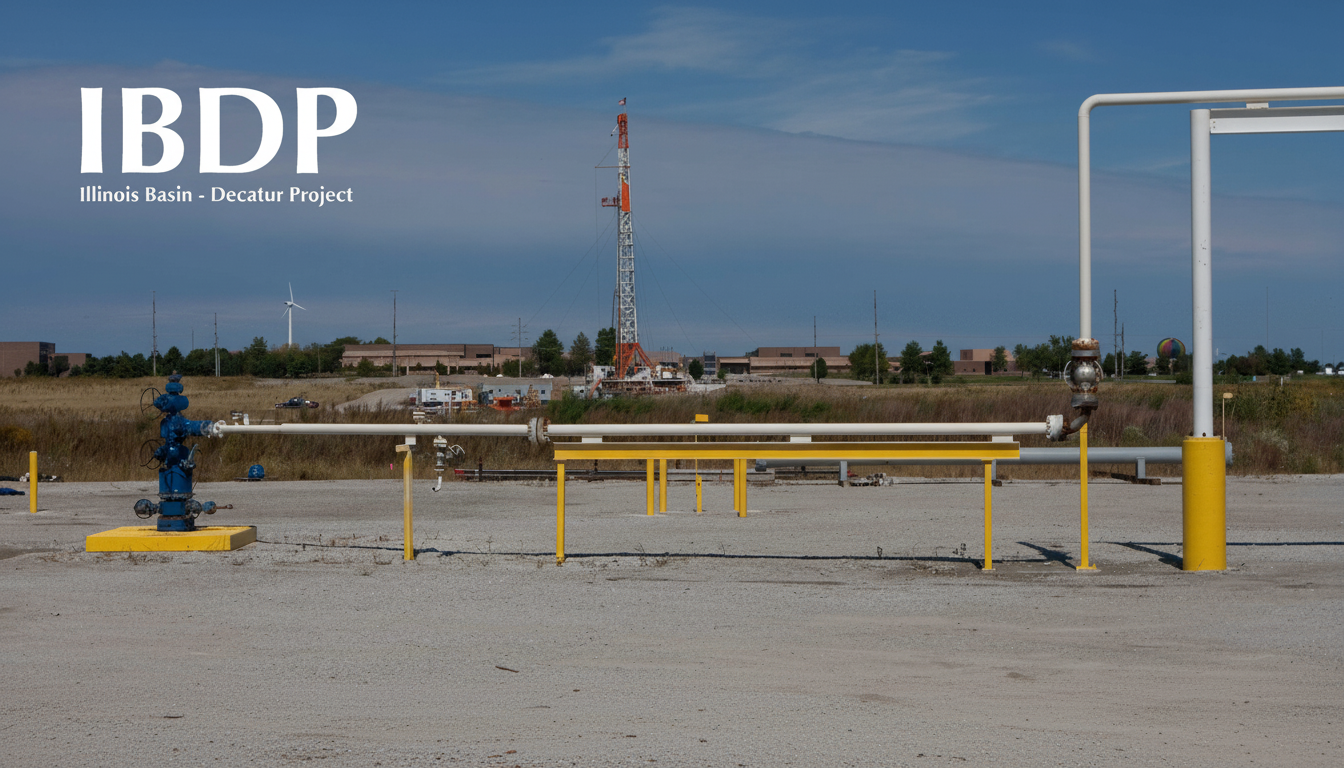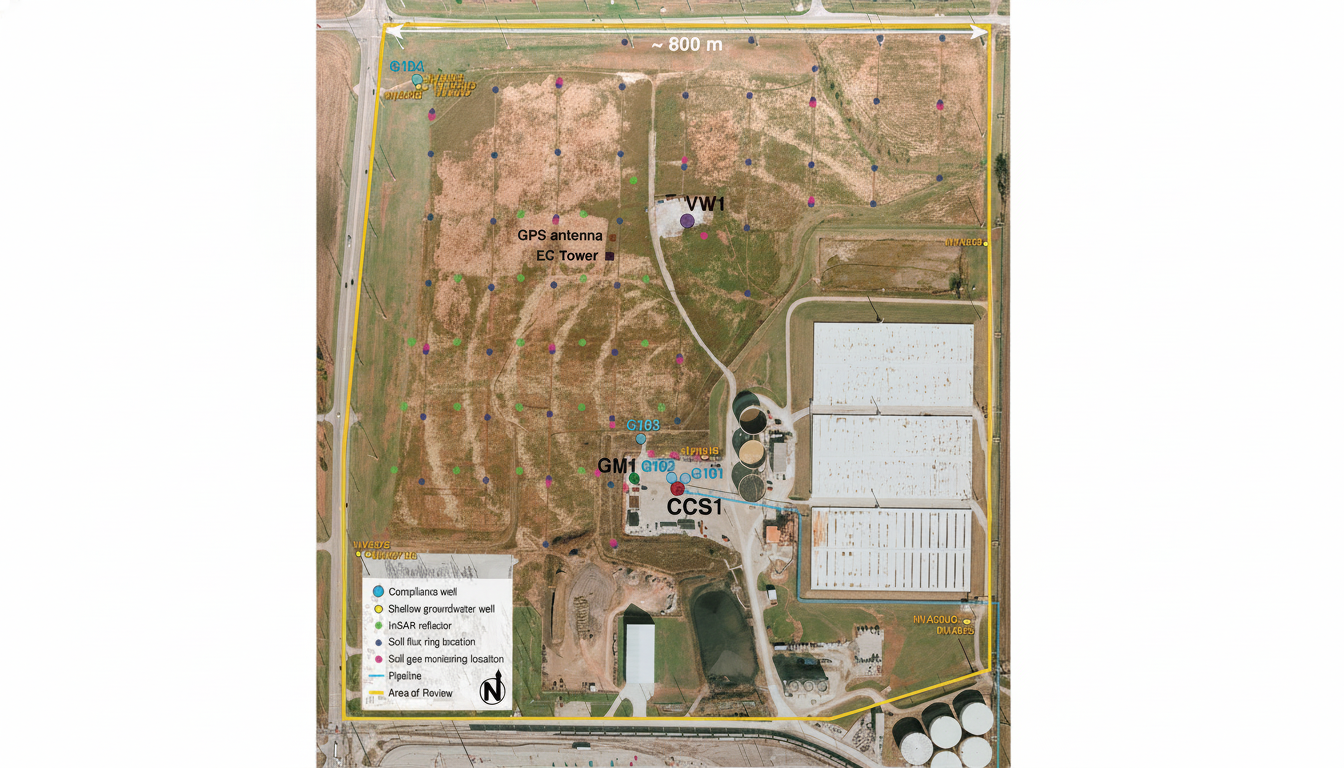Google is throwing its weight behind a new natural gas power plant in Decatur, Illinois that aims to capture roughly 90% of its carbon emissions, a high-profile bet on carbon capture and storage to supply round-the-clock power to energy-hungry data centers. The project underscores Silicon Valley’s hunt for firm, low-carbon electricity—and the unsettled question of whether carbon capture can reliably deliver it at scale.
What Google Is Building in Decatur with Carbon Capture
The 400-megawatt facility, developed by Low Carbon Infrastructure, will sit next to Archer-Daniels-Midland’s ethanol complex in Decatur, where CO2 is already injected into deep saline formations in the Illinois Basin’s Mount Simon Sandstone. Google plans to buy the bulk of the plant’s output for nearby data centers, while ADM will tap some electricity and steam for industrial needs.

If run at typical utilization for modern gas plants, the project could capture on the order of 1 million metric tons of CO2 annually, channeling it into formations that have hosted large-scale storage for more than a decade through the Illinois Basin–Decatur Project and related injection wells overseen by federal regulators.
A Bet on Firm Low-Carbon Power for Data Centers
For Google, the appeal is clear: while wind and solar dominate corporate procurement, data centers need dependable power every hour of the year. The company has committed to operate on 24/7 carbon-free energy by 2030, a goal that favors firm resources capable of filling long-duration gaps when renewables dip. Carbon capture on gas generation is one option, alongside advanced nuclear, geothermal, and long-duration storage.
Policy tailwinds help. The U.S. 45Q tax credit now pays up to $85 per ton of CO2 permanently stored in saline formations, a key incentive that can make or break project economics. Even so, the capture equipment imposes an energy penalty—often in the 10–20% range for amine-based systems—meaning more fuel is burned to deliver the same net output, raising the bar for reliable, high-capture performance.
A Mixed Record for CCS Power Plants Worldwide
Track record is the sticking point. An analysis of 13 major CCS projects representing over half of global capture capacity found many underperformed against design targets. ExxonMobil’s long-running Shute Creek gas processing facility in Wyoming has at times fallen well short of expected capture volumes, according to independent reviews. Closer to Google’s model, Canada’s Boundary Dam Unit 3—about 110–115 MW with post-combustion capture—has struggled to sustain its promised capture rates, averaging far below its 90% target in several years, as documented by SaskPower reports and energy market analysts.
Texas offers a cautionary tale and a comeback. The Petra Nova project captured CO2 from a coal unit and delivered strong capture efficiency during operations but suffered prolonged outages and was mothballed before later restarting. The lesson for buyers like Google is less about chemistry and more about uptime: elegant capture rates on paper mean little if maintenance and integration issues keep systems offline.
Storage Risks and Oversight in Decatur, Illinois
Decatur’s geology is well-studied, but not risk-free. Injections at the ADM site were paused after regulators flagged brine migration into unauthorized zones, an issue linked to corrosion at a monitoring well, before operations resumed following corrective actions. That episode highlights why rigorous monitoring, reporting, and verification—along with robust well integrity management—are essential for public confidence and for earning 45Q credits under EPA Class VI oversight.

The Mount Simon Sandstone remains one of North America’s most promising storage formations, with high porosity and capacity. But scaling from demonstration to gigaton levels will demand meticulous reservoir management, conservative pressure control, and transparent reporting to show that injected CO2 stays put.
Methane Makes or Breaks the Climate Math for Gas
Even perfect capture cannot neutralize upstream methane leaks in the gas supply chain. Methane’s warming impact is roughly 84x that of CO2 over 20 years, per the IPCC. Aircraft and satellite campaigns led by groups like EDF and NOAA have documented basin-level leakage in the 1–3% range in some regions, with sporadic super-emitter events. Those losses can erode or even overwhelm the climate gains from post-combustion capture if not aggressively reduced.
To make the climate ledger add up, Google and its partners will need verifiable low-leakage gas—via certified supply, continuous monitoring, and fast repair of high-volume leaks—on top of high, sustained capture rates at the plant itself.
What to Watch Next as Google Tests Carbon Capture
Three metrics will determine whether this bet pays off:
- Real-world capture efficiency and uptime
- Transparent, regulator-reviewed storage performance
- Demonstrated methane control across the gas value chain
Watch also for how often the plant runs, since capacity factor magnifies both benefits and liabilities, and whether the developer can keep the parasitic load and solvent degradation in check.
The broader context matters. The IEA says global CO2 capture needs to scale by an order of magnitude this decade to align with net-zero scenarios. High-profile offtakers can accelerate learning—if projects hit their marks. With Decatur, Google is testing whether carbon capture can deliver firm power with verifiable climate value, not just on a specification sheet but in everyday operation.

